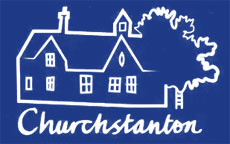Numeracy Curriculum – Year Six
Number & Place Value
- read, write, order and compare numbers up to 10,000,000 and determine the value of each digit
- round any whole number to a required degree of accuracy
- use negative numbers in context, and calculate intervals across 0
- solve number and practical problems that involve all of the above
Addition, Subtraction, Multiplication & Division
- multiply multi-digit numbers up to 4 digits by a two-digit whole number using the formal written method of long multiplication
- divide numbers up to 4 digits by a two-digit whole number using the formal written method of long division, and interpret remainders as whole number remainders, fractions, or by rounding, as appropriate for the context
- divide numbers up to 4 digits by a two-digit number using the formal written method of short division where appropriate, interpreting remainders according to the context
- perform mental calculations, including with mixed operations and large numbers
- identify common factors, common multiples and prime numbers
- use their knowledge of the order of operations to carry out calculations involving the 4 operations
- solve addition and subtraction multi-step problems in contexts, deciding which operations and methods to use and why
- solve problems involving addition, subtraction, multiplication and division
- use estimation to check answers to calculations and determine, in the context of a problem, an appropriate degree of accuracy
Fractions (decimals & percentages)
- use common factors to simplify fractions; use common multiples to express fractions in the same denomination
- compare and order fractions, including fractions >1
- add and subtract fractions with different denominators and mixed numbers, using the concept of equivalent fractions
- multiply simple pairs of proper fractions, writing the answer in its simplest form
- divide proper fractions by whole numbers
- associate a fraction with division and calculate decimal fraction equivalents for a simple fraction
- identify the value of each digit in numbers given to three decimal places and multiply and divide numbers by 10, 100 and 1,000 giving answers up to three decimal places
- multiply one-digit numbers with up to 2 decimal places by whole numbers
- use written division methods in cases where the answer has up to 2 decimal places
- solve problems which require answers to be rounded to specified degrees of accuracy
- recall and use equivalences between simple fractions, decimals and percentages, including in different contexts
Ratio & Proportion
- solve problems involving the relative sizes of two quantities where missing values can be found by using integer multiplication and division facts
- solve problems involving the calculation of percentages and the use of percentages for comparison
- solve problems involving similar shapes where the scale factor is known or can be found
- solve problems involving unequal sharing and grouping using knowledge of fractions and multiples
Algebra
- use simple formulae
- generate and describe linear number sequences
- express missing number problems algebraically
- find pairs of numbers that satisfy an equation with two unknowns
- enumerate possibilities of combinations of 2 variables
Measurement
- solve problems involving the calculation and conversion of units of measure, using decimal notation up to 2 decimal places where appropriate
- use, read, write and convert between standard units, converting measurements of length, mass, volume and time from a smaller unit of measure to a larger unit, and vice versa, using decimal notation up to 3 decimal places
- convert between miles and kilometres
- recognise that shapes with the same areas can have different perimeters and vice versa
- recognise when it is possible to use formulae for area and volume of shapes
- calculate the area of parallelograms and triangles
- calculate, estimate and compare volume of cubes and cuboids using standard units, including cubic centimetres (cm3) and cubic metres (m3), and extending to other units
Properties of Shape
- draw 2-D shapes using given dimensions and angles
- recognise, describe and build simple 3-D shapes, including making nets
- compare and classify geometric shapes based on their properties and sizes and find unknown angles in any triangles, quadrilaterals, and regular polygons
- illustrate and name parts of circles, including radius, diameter and circumference and know that the diameter is twice the radius
- recognise angles where they meet at a point, are on a straight line, or are vertically opposite, and find missing angles
Position & Direction
- describe positions on the full coordinate grid (all 4 quadrants)
- draw and translate simple shapes on the coordinate plane, and reflect them in the axes
Statistics
- interpret and construct pie charts and line graphs and use these to solve problems
- calculate and interpret the mean as an average

